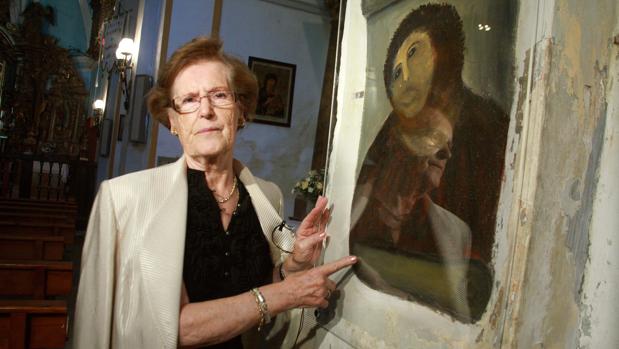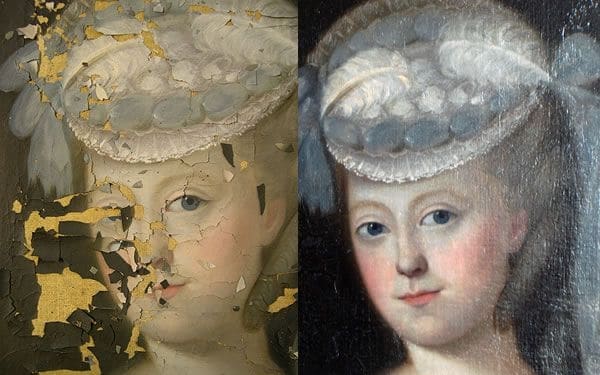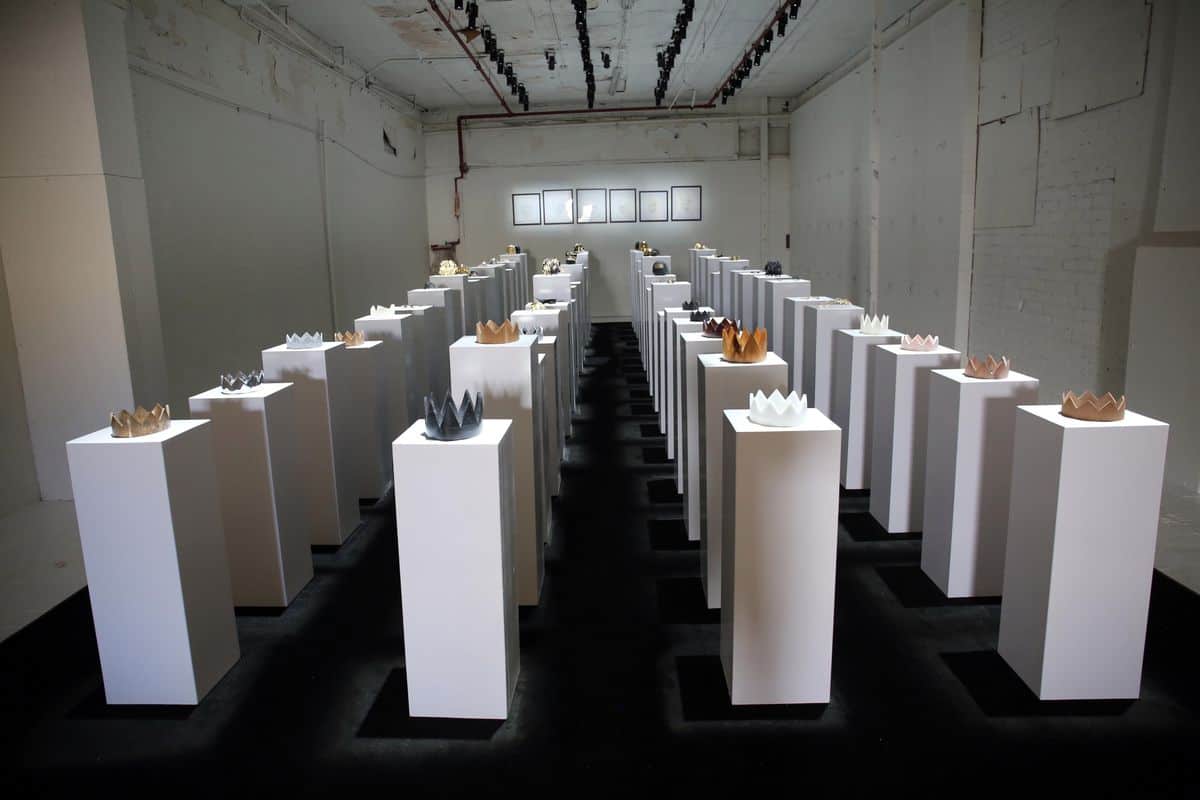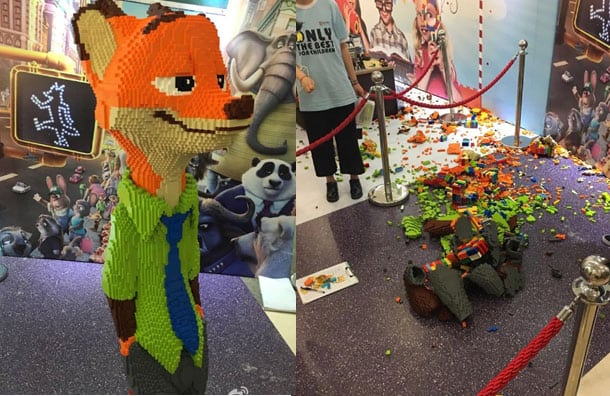Amateurs Need Not Apply
In 2012, 80-year-old Cecilia Giménez from Borjas, Spain, became an overnight sensation.
Giménez, an amateur artist, found fame after her attempted restoration of an almost 90-year-old fresco of Jesus Christ wearing a crown of thorns didn’t go as planned. The fresco, titled “Ecce Homo” (“Behold the Man”), was painted directly onto the wall of the Sanctuary of Mercy Church by Elías García Martínez around 1930.
A neighbor and longtime parishioner of the church, Giménez had long “taken solace gazing at the image of Ecce Homo,” reported The Telegraph. Seeing its deterioration, she attempted “to return it to its former glory,” but things went awry when she attempted to fix Jesus’ face. The resulting image, eventually dubbed “Potato Jesus” or “Ecce Mono” (“Behold the Monkey”) by those on the internet, became a laughingstock of biblical proportions.
https://www.instagram.com/p/BAIok6AwXT6/?utm_source=ig_embed
But despair for an entire congregation of art lovers soon became an economic boon to the church, as well as many other businesses in the area. An odd blend of detractors and supporters started to pour into the church to see the botched work. Tourists came by the thousands, paying by the pound to not only view “Ecce Homo,” but to purchase pens, mugs, and shirts depicting the restoration. It soon became difficult to eat at a restaurant in Borjas during the weekend without a reservation.
Giménez became famous, too, arguably becoming the most well-known living artist in all of Spain. Her work was dubbed “Meme of the Year” by The Guardian in 2012, and Giménez herself hit peak pop culture when she was played by Kate McKinnon on Saturday Night Live a few years later.
As the money started pouring in, Giménez even fought for a portion of the profit and won. She now uses it to care for her adult son, who has a degenerative disease.
The Subtle Art of Art Restoration
Giménez’s story turned out for the better, but amateur restorers ruin great works of art all the time. Whether it’s elderly Spanish women or selfie-taking museum-goers (more on the later), people can’t seem to avoid harming works of art. Just ask Jill Pratzon, who has worked as an art restorer since the 1980s. She studied fine art and illustration in school before apprenticing with Lubo Kralicek, a restorer from Czechoslovakia. She started Pratzon Art Restoration in Manhattan in 1990.
“Because of my background in, and love of, illustration, I was often called to treat works by Norman Rockwell, N.C. Wyeth, Harvey Dunn, J.C. Leyendecker, and many other illustrators,” Pratzon says. “The market for illustration art was growing when I entered the field in the 1980s, and as the value of original illustration increased, protecting and restoring it began to make a lot of sense to a lot of collectors.”
Pratzon says the most common issue she sees in her work is by people who take it upon themselves to fix a piece of art when it has only minor damage. “Nearly half the paintings I restore were previously altered by well-meaning, untrained people. Sometimes it’s an old patch glued on the back to support a hole—I have restored several paintings riddled with bullet holes! Once, I treated a painting that the maid had been spraying with Pledge furniture polish for decades. But removing heavy paint that was applied to cover up minor damage is common—and can be painstaking.”
Restoring a work of art, whether by a famous artist or a family member, takes great care. “When a client brings in a painting, my first step is to examine it front and back, out of the frame, if possible,” Pratzon says. “Sometimes, this entails using ultraviolet light to see if someone besides the artist has added paint—referred to as inpaint, or overpaint if egregious.”
After determining the painting’s level of need, Pratzon gives the owner an estimate. Once a price is agreed upon, there’s a number of techniques Pratzon will use in restoration, depending on the extent of the damage.
“If the paint is flaking, it may need to be consolidated to stop the flaking,” she says. “If it’s torn, there are a number of repair techniques. If the tears are large relative to the image area, or the integrity of the overall paint adhesion is in question, the painting may need to be lined (glued down) to a new backing for support. Any treatment should be reversible; anything a good restorer does can be undone.”
If the painting is missing paint, Pratzon will then match it. “If paint has already flaked off, you may see an underlying layer that’s white [or another color]. Or you may see all the way through to the canvas,” she says. “Losses must be filled to bring them level with the surrounding paint. Only then can the color be matched or inpainted. Sometimes, texture must be introduced so the repair mimics the artist’s paint strokes.”

This last part is the most difficult, since Pratzon says that the restorer should not approach his or her work as an artist. “While it is necessary to have an artist’s skill in order to match colors, inpainting should not be approached as an artist,” she says. “The goal is to replace only what is lost. We are not trying to leave our own artistic imprint on another artist’s work. Stopping oneself from going too far is a challenge for most people; it’s much more common to see wide swaths of overpaint.”
Art That Was Destroyed
A restorer’s work is never done, especially if visitors to museums continue to touch the art. Here are some other instances of works of art destroyed by less-than-careful individuals.
1. It’s a great (broken) pumpkin, Charlie Brown!
At the end of February last year, a visitor to the Hirshhorn Museum in Washington, D.C., fell into a glowing pumpkin at Yayoi Kusama’s Infinity Mirrors exhibition and broke it. The six-room exhibit, which The New York Times reported was the most popular in the museum’s history, closed for three days.
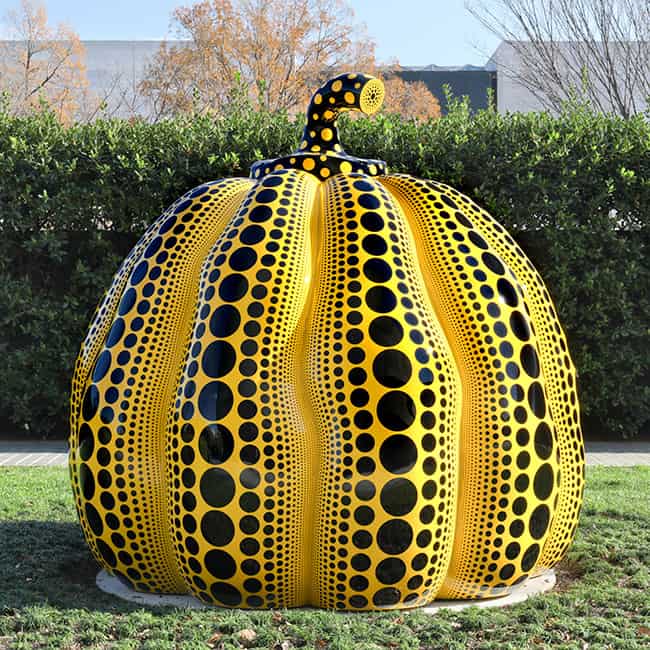
While the museum didn’t comment on the cause of the fall, art critic Kriston Capps, who spoke to two apparent witnesses, tweeted that the guest had been trying to take a selfie.
According to two visitors, a viewer broke one of the pumpkins at #infinitekusama while taking a selfie. Think the @hirshhorn has a spare?
— ◥◤Kriston Capps (@kristoncapps) February 25, 2017
The exhibit reopened with one less pumpkin and a slightly altered pumpkin layout, reported The New York Times. Kusama herself arranged for a new pumpkin to be delivered.
2. A Domino Effect
Speaking of destructive selfies, a similar incident occurred later that same year when a selfie-taking visitor of the 14th Factory, a 150,000-square-foot art warehouse in L.A., lost her balance and knocked over a row of crown-topped pedestals. The fall caused around $200,000 in damage.
Since it’s unlikely that museums will ban cell phones any time soon, Pratzon says that resisting the temptation to take yours out can benefit you. “I understand the desire to pull out one’s phone and capture the moment—I’m guilty of that sometimes, too. But looking—really seeing—can literally alter a person’s brain. I’ve had many spiritual moments staring at paintings, and those wouldn’t have happened if I had had my phone in front of my face.”
In her career, Pratzon has seen phones ruin art in all kinds of ways. “A client once brought in a painting with a large tear in the center; he had taken it off the wall, leaned over, and his phone fell from his shirt pocket, tearing through the canvas,” she says. “Needless to say, he felt terrible. ‘Can you fix it so my wife won’t know?’ he asked me.”
3. Please, don’t touch.
On May 31, 2016, The National Watch and Clock Museum in Columbia, Pennsylvania posted this security footage to YouTube of a tourist repeatedly trying to get an artifact to work. The video, titled “Please Don’t Touch!!!”, shows that, after several minutes of fiddling with it, the clock predictably falls off the wall and breaks into several pieces.
“This is why we beg and plead with our visitors to please refrain from touching objects in museums,” the description of the video reads, adding that the couple did notify museum staff immediately.
Because of this, Pratzon says the best way to approach art in museums is the old-fashioned way: with your hands behind your back. “Accidents will happen, and that’s why I’m in business, but common sense should rule the day,” she says. “When I approach a painting in a museum, I love to get as close as I can, but I always clasp my hands behind my back so the guards will know I’m not going to endanger the art.”
4. The Lego Fail
Art is a relative term, but here’s another case for not touching: this $15,000 LEGO statue of Nick Wilde from Zootopia.
The statue, which took artist Mr. Zhao three days and nights to complete, was destroyed only an hour after going on display at the LEGO Expo in Ningbo, China.
A four-year-old had gotten his hands on the statue and pushed it over, reported Mashable, causing it to shatter into several pieces. Mr. Zhao did not seek financial compensation, citing a truth that we all know to be self-evident: Kids will be kids, and they can’t resist bright LEGO structures.
Value in the Eye of the Beholder
When a piece of art is ruined, there are several reasons why someone will want it repaired. Most of it has to do with maintaining or restoring the value of the piece, however intrinsic it may be.
“Value is affected by a number of factors, one of which is condition,” Pratzon says. “If a painting is torn, dirty, flaking, discolored by old varnish, or badly restored, the value is lessened. If the art is professionally restored with archival, reversible materials, some or much of the value can be restored. In some cases, the art may regain its full value, but each instance is unique. Just because a painting has been treated, it doesn’t necessarily diminish in value; if art has been the victim of bad restoration, its value does suffer.”
https://twitter.com/DivinaDeeMe/status/1013790279835508736
“When art dealers bring work in for restoration they usually have a budget in mind,” she continues. “Some tell me they buy damaged work because they can sell it for more after I restore it. Other clients may bring in family heirlooms, like a painting of an ancestor. When they say, ‘This has no value, but I care about it,’ it gives me a pang. I always tell them, ‘If you brought it here, it has value.’”
So whether it’s someone’s personal artifacts, a family heirloom, or a priceless painting, when viewing great works of art, the rules are the same: keep your phone in your pocket, and look but don’t touch.


